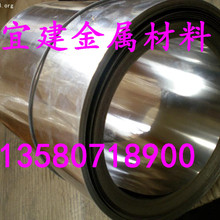On Thursday, Politicopublished a report on inconsistencies in Melania Trump’s and Donald Trump’s accounts of Melania’s immigration to the United States. While examining Melania’s claim that she would return to Europe every few months to renew an H-1B temporary work visa, as required by law, Politico’s reporters made an interesting aside (emphasis mine):
Trump’s tale of returning to Europe for periodic visa renewals is inconsistent with her holding an H-1B visa at all times she was living in New York—even if it was the lesser-known H-1B visa specifically designed for models—said multiple immigration attorneys and experts.
Trump’s former agent, Paolo Zampolli, has since told the Associated Press that he did, in fact, secure her an H-1B visa for models. Additionally, Michael Wildes of Wildes & Weinberg, the law firm representing Trump Models, independently told Slatethat she obtained a modeling H-1B. Those who are not deeply familiar with our labyrinthine immigration system might be left scratching their heads. The H-1B, after all, is typically associated with technically skilled workers—computer geeks and the like. How could Trump have gotten one for modeling?
Easily, it turns out. But Politico’s characterization of the modeling H-1B, unglamorously called an H-1B3, elides the fact that the creation of the H-1B3 was an accident—one that sheds some light on our convoluted immigration laws.
The story starts with the Immigration Act of 1990, the largest overhaul of immigration policy the country had seen in at least 25 years. The Immigration Act boosted the national immigration quota by 40 percent, instituted a slew of other changes and reforms, and created the H-1B temporary visa program for employers hoping to hire foreign workers in certain specialized industries. Those employers had previously done so under a broader H-1 visa, for which fashion models had qualified.
AdvertisementBut models weren’t shifted over to the new H-1B category, which was designated for highly skilled workers such as those in the tech industry and scientists. Nor were they shifted over, with the exception of a few supermodels, to the new O-1 visa category that was broadly designated for famous people of all kinds: athletes, actors, and individuals of “extraordinary ability” in general. To prove “extraordinariness” under the O-1, applicants had to provide box office receipts, awards, and other tokens of fame and good fortune; ordinary tear sheets—the published photos and ads that make up any model’s portfolio—weren’t included on that list. Congress, it seemed, had simply forgotten about modeling entirely.
Advertisement Advertisement AdvertisementModeling agencies panicked and claimed the new law would force the industry’s leaders in America to pack up and head for Europe. But salvation came the following year in the form of an amendment sponsored by Ted Kennedy of technical fixes to the 1990 law he had introduced. The problem was solved by simply adding models, incongruously and a bit hilariously, to the H-1B program by way of the H-1B3, designated for models “of distinguished merit and ability.” As a consequence, fashion models today compete with privately employed engineers, physicists, and programmers for the same 65,000 H-1B slots available each year. This is despite the fact that modeling doesn’t require a college degree or technical training, as all other H-1B qualifying occupations must. Although models account for a vanishingly small proportion of applicants, an analysis from Bloomberg in 2013 shows that their low numbers also mean models are much more likely to get their H-1B applications approved than the skilled workers for whom the visa was actually created, such as programmers:
AdvertisementFashion models are almost twice as likely to get their visas as computer programmers, by one rough measure. There were 478 initial applications made for fashion models in 2010, according to U.S. Labor Department data compiled by Bloomberg. The U.S. Citizenship and Immigration Services approved 250 visas for models. More than 325,000 H-1B petitions were filed for computer-related occupations; about 90,800 visas were distributed to foreign information-technology workers …Advertisement
It’s an odd situation and one that lawmakers have tried to fix. In 2008, for reasons that may or may not be clearer now, Rep. Anthony Weiner, a New York Democrat, launched a small crusade to bring more foreign models into the country amid of a flurry of activity in Congress on immigration reform. Specifically, he sponsored a bill that would have shifted models over to O-1 visas and given them a special quota of around 1,000 visas a year.
Advertisement AdvertisementThe bill would’ve satisfied both supermodels and startups and even attracted bipartisan support. Rep. Lamar Smith, a Republican immigration hardliner from Texas, told the Los Angeles Timesthat he could see Weiner, then single, “in a posh downtown New York City hotel celebrating the passage of this bill surrounded by hundreds of energized, wildly ecstatic fashion models. And you know for a fact he’s going to have an annual celebration. It’s almost too much to bear.” Smith backed the bill anyway, and it passed a committee vote. But the bill went nowhere from there, and the H-1B3 program remains unchanged today, although exceptionally famous models can still get O-1 visas instead.
Today, models who seek H-1B3 visas can submit materials to U.S. Citizenship and Immigration Services and cross their fingers that their tear sheets provide sufficient proof of “distinguished merit,” which, obviously, can be difficult to measure.
Advertisement Advertisement Advertisement“The challenge they face in this realm is trying to establish through an objective metric that they’re entitled to distinction,” attorney Michael Wildes says. “Sometimes it’s hard for us to establish a strong narrative. We never huff or puff, but we sometimes have the model wait to develop a stronger brand before the application.”
Applying models can at least take comfort in the fact that the people evaluating their tear sheets won’t be unfashionable bureaucrats who are clueless about the industry. Wildes says that U.S. Citizenship and Immigration Services trains evaluators on how to judge a model’s application.
In any case, the H-1B3 visa offers a reminder of how jury-rigged and provisional the American immigration system truly is, and it can hardly be a surprise, to Donald Trump or anyone else, that some choose to break the law rather than work through the patchwork of visas and regulations in place. We’ve constructed a system that has served broad categories of people poorly and inconsistently, whether they’ve chosen to come in through a standard queue or a catwalk.
Read more Slate coverage of the 2016 campaign.
Tweet Share Share Comment

 相关文章
相关文章


 精彩导读
精彩导读


 热门资讯
热门资讯 关注我们
关注我们
